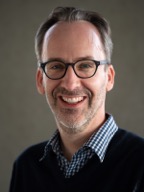
SPEAKER PROFILE |
 Prof. David J. Norris Optical Materials Engineering Laboratory, Department of Mechanical and Process Engineering, ETH Zurich Switzerland |
The Next Generation of Quantum Emitters for Nanophotonics?
Abstract
Quantum emitters provide local sources of photons or plasmons for nanophotonic devices. They are also useful for probing local electromagnetic fields and analyzing how these fields can enhance optical properties (e.g. fluorescence). Organic molecules, colloidal semiconductor quantum dots, and nitrogen-vacancy centers are well known examples of quantum emitters. Here, we will discuss work to develop a new generation of emitters for nanophotonics. We will present our recent results on: (i) lanthanide-doped nanocrystals that simultaneously provide electric- and magnetic-dipole sources, (ii) semiconductor nanoplatelets that can provide very narrow room-temperature linewidths, and (iii) extremely bright perovskite nanocrystals that emit 20x (1000x) faster than conventional quantum dots at room (cryogenic) temperature. When these quantum emitters are combined with state-of-the-art placement techniques, such as nanodripping electrohydrodynamic printing, new capabilities are enabled for photonics and plasmonics, both for fundamental studies and potential applications.
Bio
David J. Norris received his B.S. and Ph.D. degrees in Chemistry from the University of Chicago (1990) and MIT (1995), respectively. After an NSF postdoctoral fellowship with W. E. Moerner at the University of California, San Diego, he started his own research group at the NEC Research Institute in Princeton (1997). He then became an Associate Professor (2001-2006) and Professor (2006-2010) of Chemical Engineering and Materials Science at the University of Minnesota. In 2010, he moved to ETH Zurich where he is Professor of Materials Engineering. He just completed a term (2016-2019) as the Head of the Department of Mechanical and Process Engineering. He has received the Credit Suisse Award for Best Teacher at ETH, twice the Golden Owl Award for Best Teacher in his department, the Max Rössler Research Prize, an ERC Advanced Grant, and the ACS Nano Lectureship Award. He is an editorial board member for ACS Photonics and Nano Letters.